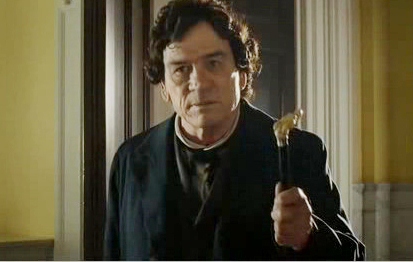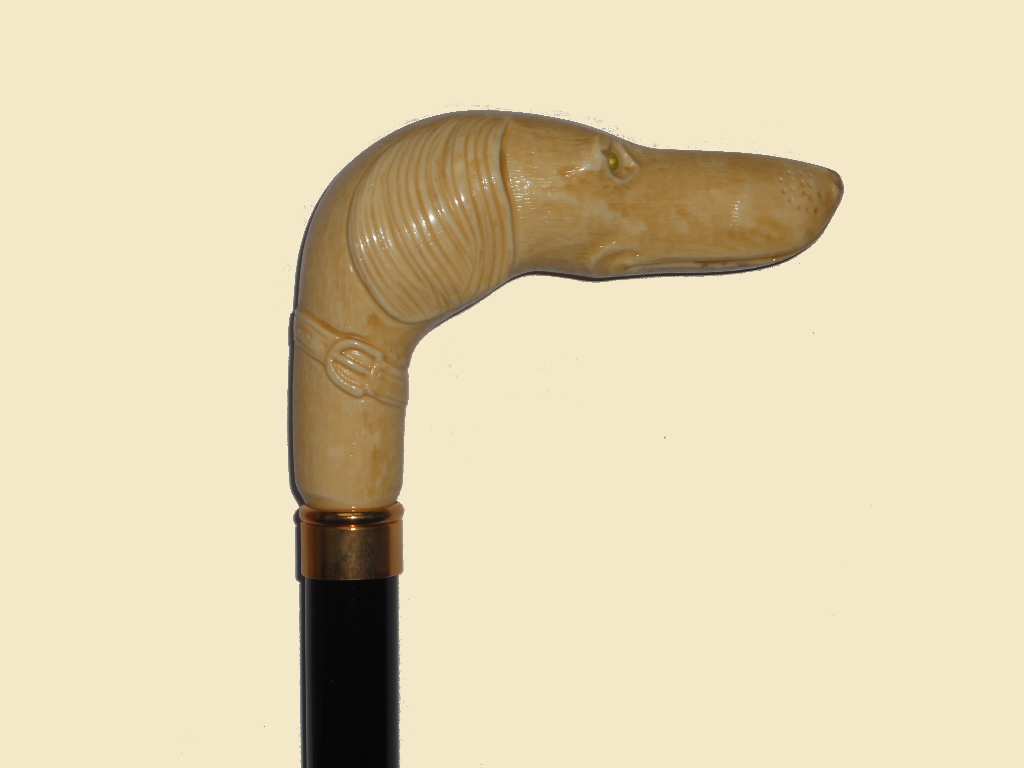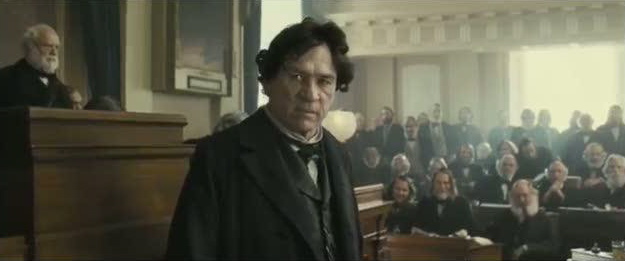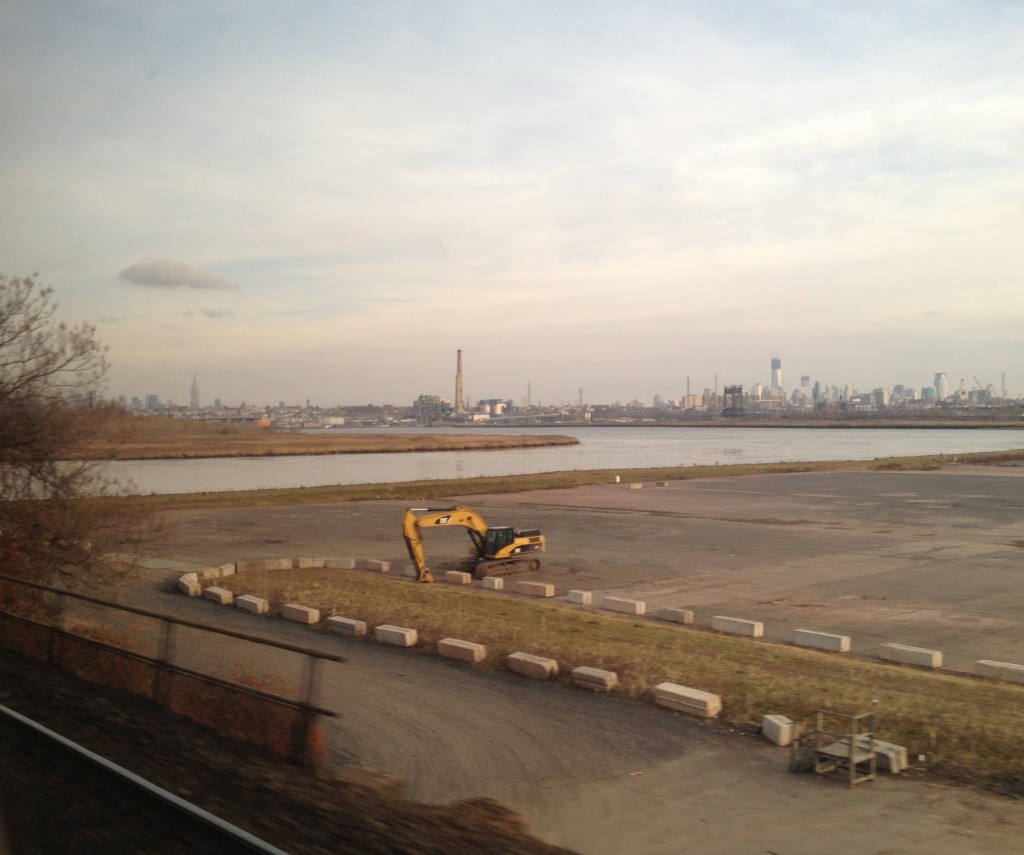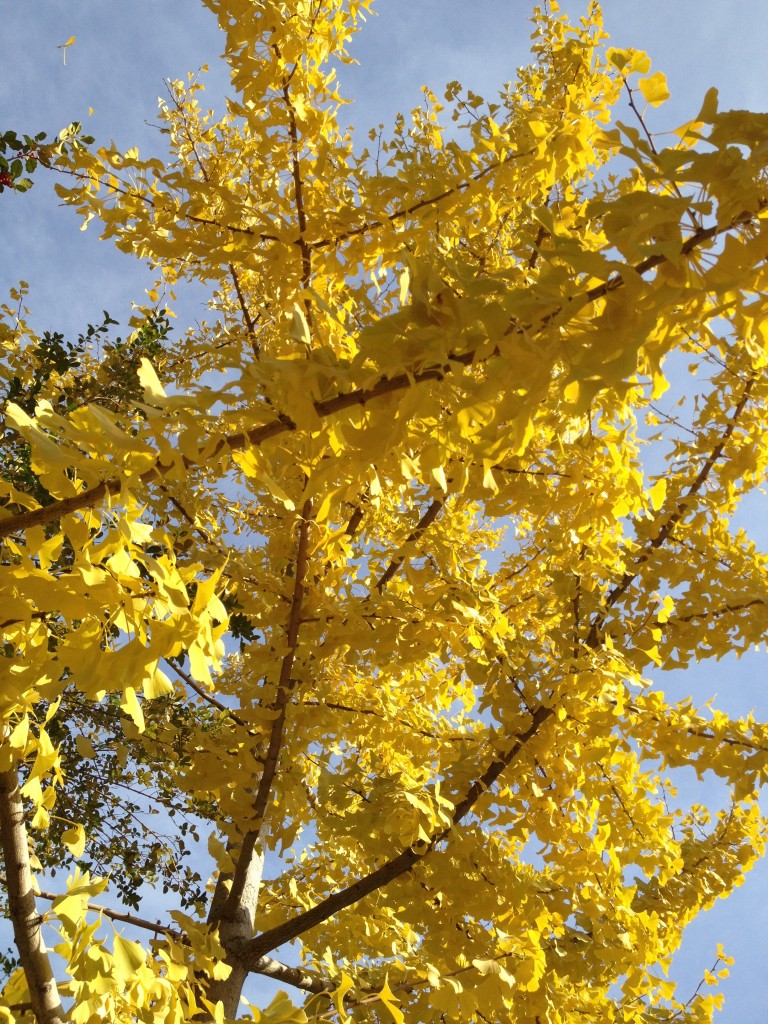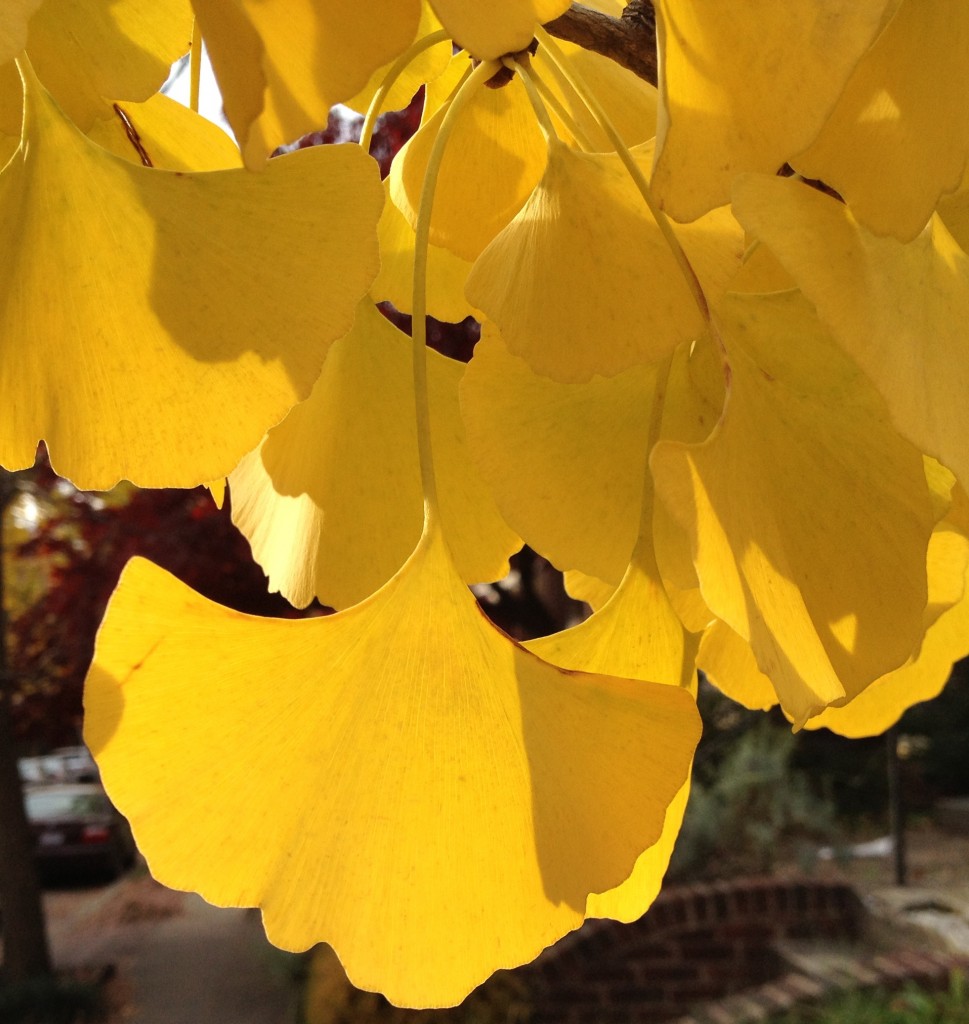.
In the distance, the west steps of the U.S. Capitol, photographed on a foggy Sunday, January 13, 2013, around 5:00 pm.
.
.
.
.
.
In the distance, the west steps of the U.S. Capitol, photographed on a foggy Sunday, January 13, 2013, around 5:00 pm.
.
.
.
.
Tags:Barack Obama, Capitol, fog, inauguration, The Mall, U.S. Capitol
Posted in Photos | No Comments »
A photo of contrails above Washington DC, in the clear morning air of January 3rd, 2013. You can see a new vapor trail being formed by a jet in the lower left quadrant, while in the upper left corner a bird tries to horn in on the action (click on photo for enlargement). This view is toward the East North East.
.
.
Tags:bird, blue sky, condensation trail, contrail, contrails, jet, vapor trail, Washington DC
Posted in Nature, Photos | No Comments »
.
.
This book is published in connection with the museum exhibition of the same name, on view at the Smithsonian American Art Museum in Washington, DC, from November 16, 2012 through April 28, 2013. The show will travel to New York City where it will be on view at the Metropolitan Museum of American Art from May 21, 2013 to September 2, 2013. Both the book and the museum exhibition are experiences of such quality that they will appeal to persons beyond the camps of Civil War buffs and lovers of American Art. For me the exhibition is a must-see. The book? It is a must-have.
What impresses is how successfully all elements of the book converge.
First and foremost is the text. Eleanor Jones Harvey’s thesis is a simple one: “The Civil War had a profound and lasting impact on American Art, as it did on American culture. Both genre painting and landscape painting were fundamentally altered by the war and its aftermath.” As well, she demonstrates how photography–the third of her areas of interest–was newly empowered as an art form.
Harvey’s writing occupies pages 1 through 241 of this large book. Each generous page measures 12 1/2 by 9 15/16 inches, allowing double-column formatting of the text and providing a broad field for its many illustrations, most prominently the 77 paintings and photographs that form the exhibition. Harvey’s prose is wonderfully clear, a pleasure to dip into, blessedly free of academic jargon and devoid of esoteric pleading. She unleashes a seemingly inexhaustible supply of essential facts and observations without halting the forward momentum of her narrative and argument. This is no mean feat.
It is a pleasure to follow the author as she conscientiously uncovers layers of meaning in each of the featured paintings and photographs. Among the pieces closely analyzed are thirteen Civil War related paintings by Winslow Homer, an artist who will grow larger in your estimation thanks to the findings of Harvey’s eye and mind. She unfurls a mini-essay on each of these works, and her enthusiasm cannot help but inspire your own looking at art. If you’re fortunate enough to have access to the exhibition, as I was, this book is an enlightening spur to engagement.
.
During my tour of the exhibition at the Smithsonian I spent several reflective minutes in front of Homer’s Trooper Meditating Beside a Grave, a small work (just 16 1/8 by 8 inches) that Harvey discusses on page 167.
.
.
While standing before it at the Smithsonian, I noticed two aspects of the painting not touched upon by Harvey — two understated features that will slowly surrender meaning to the patient viewer. The first is Homer’s treatment of the trooper’s stance. The artist’s depiction of feet or shoes, the natural terminus of the long-legged figure, is ambiguous, replaced with brushstrokes that create a seamless transition between the human body and the field of the dead. The vector of this transition is uncertain. Is the figure emerging from the earth . . . or subsiding into it? The second stunning detail is the trooper’s jacket whose middle buttons are opened. To a viewer this initially reads as a split in an otherwise closed seam, a way for the proudly uniformed trooper to cool himself on a warm day. Then the literal reading gives way to an alternative view, seeing a gash in his torso that opens up to reveal darkness. Homer renders this void in pure black pigment, blacker than any other application of black elsewhere on the canvas. Call it an exposure of the darkness of the heart, or the heart of darkness. We see a figure, eyeless, hollow, soulless: Death.
Each new encounter I have with Homer reinforces my belief that transition is the essential theme of his work. And how could it be otherwise for a contemplative artist whose career was birthed by the Civil War? If the vicissitudes of transition are encoded in Homer’s best work, the complementary theme of connections is of nearly equal importance. Not the least of the linkages Homer carefully constructs is that of viewer to painting. Consider this:
In a museum I stand in quiet reflection before a painting that depicts a man standing in quiet reflection before a grave. The grave is marked by a simple wooden cross. From the soldier’s perspective that cross is tilted back, as if responding directly to his gaze. It is easy for me, the viewer, to imagine the unseen face of the cross as a mirror, reflecting back to the man his own face. It is a face I study, with trepidation, for revelation.
.
The book, “The Civil War and American Art,” contains a feast of documentation. This includes a section of Notes (32 pages); a Bibliography of over 300 sources and references (20 pages); a Catalog listing the 77 works featured in the Exhibition; and a list of the 123 Figure Illustrations found throughout this beautifully designed book. A helpful Index rounds out the volume.
If I have any quibble it is that its reproductions sometimes fall short. Especially is this so with the many images captured by the early photographers Alexander Gardner, Matthew Brady, George N. Barnard and others which are reproduced in the chapter devoted to The Art of Wartime Photography. They have a denatured look on the page, in contrast to the original source albumin prints in the exhibition which possess a life and death immediacy.
A similar deficiency-of-the-derivative occurs in the reproduction of Homer’s The Veteran in a New Field (1865). Harvey’s discussion of the painting (at pp. 225-229) mentions its “autobiographical quality,” and she specifically focuses on the former soldier’s war-issued canteen and jacket resting on the ground in the lower right corner. Here is a photo I took of page 227 on which the painting is reproduced.
.
.
A close-up shot of the lower right corner is unrevealing.
.
.
What’s not visible because of the book’s low-resolution reproduction, is a critical detail: the initials “WH” inscribed on the veteran’s canteen. This detail is best appreciated, of course, if you are in the presence of the painting itself and are able to move in for a closer look. At the end of the exhibition’s tour, The Veteran in a New Field will return to its permanent home as a treasure of the Metropolitan Museum of Art’s recently renovated wing devoted to American Art. In the meantime, you can catch a glimpse of the “WH” inscription thanks to the Met’s online image of the painting (click on the “fullscreen” option and zoom in). Here’s a screen capture of the jacket and canteen.
.
.
.
Unlike Richard Estes (or, in a different medium, Alfred Hitchcock) who plants his name (or himself) in his work as an act of whimsy, Homer sometimes does so for a meaningful reason. Most poignantly this occurs in my favorite Homer painting, The Fox Hunt, 1893 (Pennsylvania Academy of Fine Arts), where in the lower left corner of the painting his signature is immobilized by the drifting snow, echoing the pose and plight of the fox. Note also how the fox, just as the war veteran three decades before, turns his body to face away from us as he confronts a new kind of challenge on a potentially exhausting field.
.
.
.
On a playful note, another example of Homer’s look-at-me urge is to be found in a wood engraving, The Beach at Long Branch, published in Appleton’s Journal, August 21, 1869 (click on the image to enlarge). Here three young women stand wondering, Who is WH? What I myself wonder is whether Homer is alluding to the Judgement of Paris episode in Greek myth. Is he pulling a tongue-in-cheek reversal on that story, assigning to the most comely of the three young women the role of selecting . . . Mr. W.H. himself ?
.
.
“The Civil War and American Art” is a publication of the Smithsonian Museum of American Art in association with Yale University Press. To get a sense of the book’s design, you can view the first 18 pages on Scribd.com. Some additional photos of my copy prove the values that guided its production.
.
.
.
.
.
____________________________________________________________________
NOTES and further observations
1. An abbreviated version of this book review appears on Amazon.com, here.
2. The photograph of Trooper Meditating Beside a Grave in this post is the Announcement Image for a 2009 exhibition at the Dixon Gallery and Gardens (Memphis) and the Katonah Museum of Art, “Bold, Cautious, True: Walt Whitman and American Art of the Civil War Era,” a show organized by Kevin Sharp which explored ground similar to that of “The Civil War and American Art.” Additional information about that exhibit is available here, here and here.
3. Faith Barrett, in her recently published “To Fight Aloud is Very Brave,” argues that poetry also had an important role in defining national identity: “Civil War poetry changed the way Americans understand their relationship to the nation.” A November 2012 interview with Barrett can be read on the Poetry Foundation’s website , here.
4. A new installation of American art at the Detroit Institute of Arts “explores the themes of the Civil War, Abraham Lincoln and the abolition of slavery.” The works in the small exhibition are part of the permanent collection galleries in the Richard A.Manoogian Wing of American art. Among the paintings is this 1861 still life, Patriotic Bouquet, by George Henry Hall.
.
.
5. On the subject of communication by metaphor, in a previous blog post I argued that still life paintings — no less than landscape and genre paintings — may encode responses to the Civil War.
6. Three years after he painted The Veteran in a New Field, Homer once again included himself in Artists Sketching in the White Mountains. The renewed artist has returned to his natural field. Homer’s back is turned away from us; he is intent on work. In a corner of the canvas, instead of finding a discarded canteen or jacket we now see a large case for the tools of the artist’s trade (visible in the detail, below). That is where Homer proudly affixes his signature.
.
.
Tags:Alexander Gardner, American Art, Appleton's Journal, Bold, book review, Cautious, Detroit Institute of Arts, Dixon Gallery, Eleanor Jones Harvey, Faith Barrett, Fox Hunt, George Henry Hall, George N. Barnard, Judgement of Paris, Judgment of Paris, Katonah Museum of Art, Kevin Sharp, Matthew Brady, Metropolitan Museum of Art, Patriotic Bouquet, review, Smithsonian American Art Museum, still life painting, The Beach at Long Branch, The Civil War, To Fight Aloud is Very Brave, Trooper Meditating Beside a Grave, True, Walt Whitman and American Art of the Civil War Era, Winslow Homer
Posted in Art, Authors, Book Reviews, Culture, Photos | No Comments »
Tags:Christmas, deflated, eggnog, inflatable, snowman
Posted in Humor, Photos | No Comments »
.
.
The text of this thin volume is a translation from French to English of a transcript of a recording of a lecture Michel Foucault delivered in 1971 at the Tahar Haddad Cultural Club in Tunis. Foucault’s words, in print, occupy 40 pages.
While multiple factors (time, place, language, the reduction of voice to print) conspire to keep Foucault’s lecture from fully engaging the American reader of today, what Foucault still manages to communicate are insights that, I believe, will interest the typical museum-goer.
Foucault illustrated his lecture with 13 slides. The book includes reproductions of each of those paintings, from “Music in the Tuileries” (1862) to “A Bar at the Folies-Bergere” (1881-82). Unfortunately, the illustrations are so tiny (for example, the 81.9 inches by 104.5 inches of “Luncheon on the Grass” (1862-63) are shrunk to a Lilliputian 3.2 by 4.2 inches) and so blandly reproduced (details are lost, colors misplaced, and the punch of Manet’s blacks absent) as to make them nearly worthless. Until a future e-publisher energizes Foucault’s text with interactive content, consider bringing to your reading spot both this book and a tablet on which to access the illustrations in fuller detail, such as the set of 13 gathered on one page on this site.
Additional editorial content includes an excellent introductory essay by Nicolas Bourriaud (11 pages), a very brief Translator’s Introduction by Matthew Barr, and a one-page index.
At the beginning of his lecture Foucault notes: “I am not a Manet specialist; nor am I a painting specialist, so it is as a layman that I would speak to you about Manet.” His focus is on formal analysis, and he organizes his thoughts under three rubrics: (1) the space of the canvas; (2) lighting; and (3) the place of the viewer. It is with these strategies, Foucault argues, that Manet succeeded at “inventing, if you like, the ‘picture-object’, the ‘painting-object’” — a move that made possible all of modern art.
Reading “Manet and the Object of Painting” provided me a new set of deciphering tools to use when standing before a Manet. More broadly, Foucault taught me new ways to look at representational art of all kinds.
Consider, for example, the first of his themes — Manet’s adoption of a radical approach to space that eschews traditional depth into the picture plane. Pointing to his first slide, the painting “Music in the Tuileries” (1862), Foucault notes how “there is not much depth, the figures in front are in a way masking almost completely what happens behind, from which derives this effect of a frieze.” In his second illustration, “The Masked Ball at the Opera” (1873-1874), he again points to how “the whole spatial balance is modified … Not only is the effect of depth erased, but the distance between the [front] edge of the picture and the back is relatively short, such that all the figures find themselves projected forward; far from there being depth, you have on the contrary a sort of phenomenon of relief.”
Similarly, in “The Execution of Maximilien” (1868), Manet employs “the same procedures, that is to say a violently marked and compressed closing of space by the presence of a large wall, a large wall which is no more than the repetition of the canvas itself; whereby, as you can see, all the figures are placed on a narrow band of earth.”
.
.
Armed with Foucault’s observations, I looked anew at the work of Norman Rockwell. This may seem an odd choice for a compare-and-contrast exercise. Yet I would argue that in many of his immediately memorable compositions Rockwell effectively reforms space in ways reminiscent of Manet. Recall Foucault’s descriptions in the preceding paragraphs: not much depth … the presence of a wall … a violently marked and compressed closing of space … the effect of a frieze. See how fittingly those strategies attach to “The Problem We All Live With” (1964):
.
.
Citing Normal Rockwell serves a secondary purpose, which is to suggest the constraints on Foucault’s perspective. First, his interest is limited to painting. Other forms of representation such as sculpture, drawing, printmaking and illustration, are ignored. More importantly, the revolt whose success Foucault convincingly attributes to Manet ended what we now are able to appreciate was merely a brief interregnum, a mode that triumphed but a few hundred years (from, say, the early 15th to the late 19th centuries) before receding into the broad flow of European artistic output. Also, non-European art — the bulk of mankind’s imaginative achievements — is not within Foucault’s ken.
You may be disappointed too if you expect Foucault to stray much beyond formal analysis into the realm of philosophy. Fortunately, that task is taken up by Nicolas Bourriaud whose superb essay I recommend be read both before, and after, reading the main text — especially if, like me, you’ve had no previous exposure to Foucault’s works of philosophy.
“Manet and the Object of Painting” is a handsomely produced book; I was pleased by Tate Publishing’s surprising use, in a paperback binding, of stitch-sewn signatures (click on the photos to enlarge them).
.
.
.
NOTES
1. Available online are the initial minutes of Foucault’s Lecture on Manet, in Tunis (I estimate the entire lecture occupied an hour). The audio recording can be accessed from the right side of this French language page: http://michel-foucault-archives.org/?Manet. The site introduces the audio excerpt with this explanation: “En marge du Cahier de l’Herne Foucault qui reproduit deux versions des conférences de Foucault sur Manet, nous mettons en ligne quelques minutes de la conférence que Foucault donna le 20 mai 1971 au Club Haddad, conférence intitulée « La Peinture de Manet ». Foucault avait en effet le projet d’un ouvrage sur Manet, entrepris à partir de 1966, et qui était promis aux éditions de Minuit. Ces recherches donnèrent lieu à plusieurs conférences : à Milan en 1967 où il fit la rencontre d’Umberto Eco, à la Albright-Knox Art Gallery de Buffalo le 8 avril 1970 sur “Le Bar des Folies Bergères” ainsi qu’à Florence en novembre 1970, à Tokyo durant l’automne de la même année, et enfin à Tunis en 1971.”
2. Here’s a mystery calling for a solution: The present volume (on page 27, footnote 1) indicates this lecture was part of a regular Tuesday evening series at the Haddad Center. Yet all the scholarship I’ve found cite Foucault’s Manet lecture date as May 20, 1971, which was a Thursday.
Tags:Manet, Matthew Barr, Michel Foucault, Music in the Tuileries, Nicolas Bourriaud, Normal Rockwell, The Execution of Maximilien, The Masked Ball at the Opera, The Problem We All Live With, Tunis
Posted in Art, Authors, Book Reviews, Culture, Photos | 1 Comment »
.
A few days ago I saw Lincoln, the new Steven Spielberg film. I will see it again. When I do I want to pay close attention to a brief scene that, in my memory, shows the quiet side of the booming brilliance of Tommy Lee Jones’ depiction of Thaddeus Stevens.
.
.
Jones portrays Stevens, long-term Representative from Pennsylvania and abolitionist leader of the Radical Republicans, as a man in motion. Born with a club foot, Stevens relies on a walking cane. The handle of that cane — made of brass or, more likely, carved ivory — appeared to me to be in the shape of a dog’s head. The dog quite possibly is a greyhound, similar to this one:
.
.
Greyhounds are known for their prey-drive. They are bred for coursing: the pursuit of game, which they catch by virtue of their speed, running by sight not by scent.
The quiet scene that so struck my fancy is the one in which we find Stevens sitting in a chair on the floor of the House of Representatives. He is there to participate in the debate over the 13th Amendment to the U.S. Constitution that will abolish slavery. The proposed Amendment is a political test and for Stevens, above all, a moral necessity. The prize of the Amendment’s passage in the House is uncertain.
As captured in Spielberg’s lens, Stevens sits alone with his thoughts while other Congressmen mill about. In one hand he clutches his cane, as if for added support. His blocky head turns and scans the chamber left and right. We follow his eyes which, the director wants us to understand, are the eyes of a wily politician surveying friend and foe, hungrily sizing up prospects.
And then comes a playful, comic detail, a gesture I strongly suspect was Tommy Lee Jones’ idea. It is simply this: Stevens slowly rotates his cane. What we see moving, of course, is the cane handle, the greyhound. Jones, the ventriloquist, covertly moves his dummy. Follow it now — an alert animal head, eyeing one side of the room and then the other. Is the run for the prize about to begin?
.
It usually takes me a second look to discover all that a great actor delivers. Today I was able to revisit a bit of Tommy Lee Jones’ performance, as found in one of the official video clips from Lincoln. It is the only one that focuses on Jones. It lasts only 32 seconds and is available on YouTube, here.
.
.
In this scene Stevens, in the very center of the floor debate, is in high dudgeon mode. Notice how the actor seizes the opportunity to marry oratory with physicality. In a subtle move (at the 0:22 mark), just as the stream of invective he directs at his opponent (George H. Pendleton) reaches a climax, Jones attempts to move forward, first glancing downward to guide his wayward foot. This seems an inconsequential gesture, the precaution of a 72-year-old man who’s unsteady on his feet. But it is more than that. It sets up the next beat. Only seconds later, Jones re-creates his awkward gait in service to his speech. This time he stamps his foot audibly on the wooden floor (“the foot of man,” he dubs this action) — pounding his words with a final exclamation point.
.
Update (11/25/2012 at 5:30 pm): Folks at the greyhound forum believe the cane Stevens carries is a greyhound cane, as does the blogger Shannon.
.
Tags:13th Amendment, club foot, George H. Pendleton, greyhound, handle, Lincoln, movie review, Radical Republicans, slavery, Steven Spielberg, Thaddeus Stevens, Tommy Lee Jones, walking cane, walking stick
Posted in Culture, Movies, Photos | 2 Comments »
Tags:Amtrak, Empire State Building, New Jersey, NYC, One World Trade Center, skyline
Posted in Photos | 1 Comment »
.
.
Larry McMurtry’s take on CUSTER, according to a growing consensus of reviewers on Amazon, is a pathetic effort. Some of these reviewers are historians of professional or amateur status and others are not. But all of them, it seems to me, come across as serious readers who care about the truth and care about history done right. They’re offended by the book’s countless flaws, factual errors, book production missteps, and quality-control oversights.
I join them in saying this is a sadly misbegotten thing.
I’m not a historian, amateur or otherwise, just a general reader. Before opening CUSTER I knew next to nothing about the General, other than how easily come the laughs whenever his name is invoked when characterizing someone else’s abject failure. Even if you don’t know the date by heart as do Custer-maniacs — it was June 25, 1876, by the way — everyone knows the outcome of the Battle of the Little Big Horn. So to those of you in a similar position, novices who might be attracted to the book because it looks like it might be a good way to enter Custer’s world, I say this:
Stay away.
As a biographer, McMurty fails the new reader. His presentation is disjointed. Without any helpful introduction, McMurtry drops in names and places and events that aficionados of Custer and the Battle of the Little Bighorn will recognize but that leave the rest of us neophytes without a clue. He repeatedly veers off into tangents that have little or nothing to do with the subject at hand. The chapters are so short that narrative momentum is impossible.
Maybe you’re like me, expecting McMurty would take his talents as a storyteller and his skills as a novelist (no dispute that in his fiction he’s crafted fully-rounded characters you swear are real people) and use those talents and skills to re-imagine Custer for readers of today. Well, there too you’ll be disappointed. For me the final bitter pill was this: when I finished the book I had no strong sense of what it would have been like to meet Custer in person and know the man.
I don’t want to beat a dead horse, but aside from the major criticisms of knowledgeable reviewers, there’s yet one more problem to mention. In a book that carries a $35 list price, you will be shocked — and as a reader you will feel insulted — by how many typos mar McMurtry’s text as it now lies on the pages of this book. Was nobody at Simon & Schuster available to proofread it? On the more serious matters of factual inaccuracies in McMurtry’s text and in the captions accompanying the otherwise interesting illustrations (on the latter point, see the list of errors, here), why didn’t the editor listen to the pre-release readers who submitted comments and corrections? Why was this rushed into release in this sorry state?
For sure there’s a story to be told someday about how McMurtry, a writer with a long and distinguished career, got roped into this terrible adventure. If the unfocused, error-riddled text is from his hand and if it represents his final polished draft, then this truly must be viewed as a misconceived endeavor.
If, despite all the guff we unpaid reviewers are dishing out, you remain interested in adding CUSTER to your library or giving it as a gift, please consider waiting a bit. Mark my words: not long after the holidays there will be stacks of CUSTERs on the remainder table at your nearest Barnes & Noble, radically marked down with a “must-sell-or-we-send-it-to-the-pulp-mill” low price.
– – – – –
One more thing that got my goat is how Amazon teamed with the Simon & Schuster publicity shop to tout a product using misleading means.
A lot of people will decide whether to buy CUSTER based on information found on the book’s product page on Amazon. Potential purchasers may check out a few of the customer reviews and might also scan the “Editorial Reviews” section for insights. That section, just above the “Product Details” area, is where Amazon places comments on the book derived main stream media outlets — newspapers and magazines. This material is fed to Amazon from the publisher. In the case of CUSTER, this means Amazon is featuring blurbs plucked by Simon & Schuster from ten positive reviews of the book. Or at least you’re led to believe they’re reviews of CUSTER. And so someone who absorbs that material, together with the customer reviews, may wind up scratching their head in wonder: How could those smart folks at The Wall Street Journal, The New Yorker, Chicago Tribune and The Washington Post say such nice things about CUSTER, when most of the common readers who posted detailed reviews are so negative? The answer is simple:
None of those positive-sounding quotations relate to CUSTER.
If you do a Google search you’ll discover the quotation from the Wall Street Journal actually comes from a review of McMurtry’s 2010 book entitled “Hollywood”. The statement from The New Yorker was previously attached to the author’s “The Berrybender Narratives”. The sentence from the Chicago Tribune was pulled from a 2002 review of “Sin Killer” (the first of the “Berrybender Narratives”). The words from the Washington Post were also previously attached to “The Berrybender Narratives”. Of you’re wondering about that second dry quotation from the Wall Street Journal — well, it appeared in a recent interview piece with the author; in no way should it be taken as the Journal expressing a positive judgment on CUSTER.
The remaining excerpts in the “Editorial Reviews” section do in fact come from recently-published reviews of McMurtry’s new book. Yet there, too, skepticism is in order.
For example, the 20 upbeat words carefully lifted from Kirkus Reviews are, in truth, more than overshadowed by the critical remarks found elsewhere in the complete review (available online here), such as this less-than-enthusiastic summary: “McMurtry’s observations are not especially interesting […] and some wander off topic.” The same goes for the excerpt from a review in Booklist, which, when read in its entirely, also comes across as damning McMurtry with faint praise. Booklist labels the book as “neither a comprehensive nor a conventional biography of Custer. Instead, McMurtry offers a series of vignettes and musings … McMurtry often paints an unflattering and probably unfair portrait of Custer.” Granted, the Booklist reviewer does say many of the author’s “tidbits” are “interesting.”
As for the USA Today’s review of CUSTER that Amazon cites, upon reading the complete review I found it contains some not entirely reassuring words of advice to the potential reader; words that, for some reason, are missing from Amazon:
“You will enjoy the book more than Custer enjoyed the battle.”
I kid you not.
.
Tags:Amazon, Custer, General George Custer, Jack Paar, Larry McMurtry, Simon & Schuster
Posted in Art, Authors, Book Reviews, Photos | No Comments »
Tags:Gingko, Gingkos, ginkgo, Ginkgo biloba
Posted in Photos | No Comments »
.
Recently I acquired a small still life painting by the 19th century American artist Edward Chalmers Leavitt (1842-1904):
.
| Still Life with Apple on a Marbletop Oil on canvas, signed lower right and dated 1862. 6.5 x 8.75 inches |
.
Depictions of apples are very common in nineteenth century American art, and it’s not hard to understand why.
The apple’s renown can be traced to decades of widespread cultivation of apple trees throughout the growing nation. Successful harvests yielded not only abundant and flavorful table fruit, but an important beverage: millions of gallons of hard cider which thirsty Americans consumed with abandon.
For a young nation still in the process of defining itself, the apple was an object poised to take on symbolic importance. The natural stages of apple production — seeds, saplings, trees, new blossoms, nourishing fruit — furnished metaphors for nation-building. And when the new nation was in need of home-grown myths, they annointed Johnny Appleseed, whose legend is substantially rooted in fact.
.
William Gropper, “Johnny Appleseed,” lithograph (another version, here)
.
Johnny Appleseed became a hero of a quintessentially American kind, as his story blends both moral and practical lessons. Likewise the humble fruit he championed. Americans saw in the apple something they were temperamentally inclined to invest with representational authority.
By the middle of the nineteenth century the apple had achieved a status approaching that of a national symbol. Twice in his journals (in 1848 and in 1851) Ralph Waldo Emerson declared the apple to be “our national fruit,” and he later voiced that same judgment without fear of contradiction in lectures devoted to “Country Life” delivered to audiences in Boston and Worcester (1858) as well as in Brooklyn (1859):
“The apple is our national fruit. In October, the country is covered with its ornamental harvest. The American sun paints itself in these glowing balls amid the green leaves, the social fruit, in which Nature has deposited every possible flavor; whole zones and climates she has concentrated into apples.”
This background adds to our understanding of Still Life with Apple on a Marbletop and the artist who painted it.
In 1862, Edward Chalmers Leavitt, a young man eager to extend his artistic reach beyond an early talent for drawing, decided to capture an apple’s essence in oil paint on canvas. This small painting may be the earliest surviving work by him, according to my research. Indeed not much is known with certainty about Leavitt’s training and early career as an artist. His first participation in an art exhibition occurred five years after Still Life with Apple on a Marbletop, when a work labeled “Fruit Piece (painting)” appeared at an exhibition sponsored by the Rhode Island Society for Domestic Industry. In his later years Leavitt achieved local prominence as the premier still life painter in the city of Providence, churning out grandiose and meticulously detailed compositions reflecting America’s material prosperity at the end of the century. These later commercial works, designed for an upper middle class market, are a long way away from his early apple.
A single apple on a shelf: what could be simpler, more humble, more innocent?
.
.
.
But look closer. Doesn’t this begin to look like more than the commonly encountered image of an apple? I think the answer is yes. Many a curious thing is to be found in Leavitt’s depiction of America’s fruit. Some things extraneous. Some things pointing beyond the literal, beyond the space the artist constructed to house his apple. Perhaps something with a personal meaning.
What I see in the painting now set before me is this:
Here, in a simple depiction of an apple on a marble shelf, the artist has encoded the state of the nation in 1862.
I interpret the painting as a representation of the country as seen through the eyes of a young man during the eventful year of 1862. Yes, I’m engaging in some speculation here. I may never find confirmation of my premise. But what I do have in hand already are two things: a tantalizing biographical fact, and the evidence of the painting itself.
Here is the interesting fact: Edward Chalmers Leavitt, born and educated in Providence, Rhode Island, decided at the age of 19, at the outbreak of the Civil War, to volunteer to serve the Union cause. Exactly when in 1862 he painted Apple on a Marble Tabletop may never be determined. But there is little doubt in my mind that throughout the months of 1862, Leavitt, like other young men of his time and place, must have followed intently every scrap of news and rumor that came his way about the campaigns and battles of the war. That second year of the Civil War saw the further terrible sundering of our nation. Blood was spilled on the battlefield; tears were spilled on the homefront.
The painting itself — its iconography — is intriguing. My reason to believe Leavitt had a higher aspiration for his painted apple, that he intended this apple as a commentary on contemporary events, is grounded in three elements of the picture. These details telegraph a message.
1. The geography of battle
First there is the matter of how Leavitt depicts the physical setting the apple occupies. Within a very small format (just 6 1/2 by 8 3/4 inches) the artist has created a narrow and shallow display space. On reflection, however, this space broadens out to encompass a larger space. This in turn allows the apple to assume a larger meaning. What did Leavitt do to transform the space?
I find it significant that instead of attempting to replicate the look of marble as would other painters of the period, Leavitt purposely designs the stone’s signature mineral veins to achieve something other than mere verisimilitude. I’ve never before seen an American still life artist paint marble in this way. The veins, as ordered by Leavitt, are like meandering rivers that spread out across a wide territory. More broadly still, these lines suggest geographical markers or boundaries of territory. Some of these geographical cues refer to natural formations (we think of rivers) while others are man-made (notice the straight east-west line marking the meeting of the interlocked planes — creating “north” and “south” halves of the painting).
.
.
Both the flat backdrop slab of marble and the flat shelf that projects outward toward the viewer are of equal prominence. While we perceive these as two separate surfaces, they can also be read as sections of one partially unfolded but not yet fully flattened map, thanks in part to the implied continuation of veins from one plane to the other. Indeed, on the left side of the picture we seem to be able to observe a river, formed in the north, grow as it wends its way south. The web of arteries, while mysterious, strongly suggests this decipherment. But what, in a larger sense, is the meaning of this eerie feature of Leavitt’s composition? What does it signify in the American context of 1862?
I believe the landscape-like element of this still life represents the geography of the American Civil War.
For Leavitt to use his painter’s brush to conjure up rivers, creeks and runs in the year 1862 was inevitably to awaken the names of skirmishes and battles lately entering people’s consciousness and speech: Bull Run, Wilson’s Creek, Middle Creek, Shiloh. Even if it was the convention of just one side of the conflict (the Confederacy) to name battles after the nearest river or run, those names would have been in the thoughts and on the tongues of everyone, north and south, following news of the war, reading newspaper accounts and pouring over illustrated maps. I cannot claim the lines Leavitt etched into his unfolded stone map correspond to any actual geographical boundaries or waterways met in the path of war. They don’t have to. It served Leavitt’s purpose to create a general schematic of the water-carved fields of battle. What Leavitt intended has been successfully evoked.
.
.
.
.
Notice also what happens to us, as viewers, when we entertain the notion, even if only for a moment, that this apple is resting on a huge expanse of territory. In our mind’s eye the apple balloons in size. Our sense of scale goes kerflooey, as happens when we look at a surrealistically large apple in a painting by Magritte.
.
.
At the very least, our sense of the meaning of the apple expands to include new possibilities.
.
2. The inflicted wound
The apple has suffered a bruise. It’s a distinctive wound.
.
.
For centuries still life artists have used the trope of imperfections in the skin of a piece of fruit to signify the impermanence of beauty, illustrating the poet’s observation, “everything that grows holds in perfection but a little moment.” Yet this is almost always conveyed through depictions of naturally occurring flaws, inherent decay rising to the surface or the natural decomposition of skin post-ripeness. Apples, for example, may be shown with lesions of apple scab disease.
In contrast, the bruise Leavitt painted has a different look and meaning. It appears its cause was an irregular action, an unnatural source, something external. A plausible reading is that the wound is one inflicted by an opposing human hand, when the violent pressure of a finger and nail left a ghostly outline on the skin.
This wound occupies the southwest quadrant of the face of the apple the artist presents to the viewer. From the vantage point of Leavitt’s New England roots and his Providence, Rhode Island, home base, to the southwest is the very direction he would point, when locating the depredations of the major Civil War engagements in the year 1862. Think of Shiloh (Tennessee); Gaine’s Mill (Virginia); 2nd Battle of Bull Run (Virginia); Battle of Richmond, Kentucky; Antietam (Maryland); and Fredericksburg (Virginia).
.
3. The blood of battle
One aspect of the apple delights the eye at first glance — or at least delights the eye of a viewer who assumes this to be an innocent representation of an apple. Two drops magically cling to the apple’s skin. These two drops belong to the tradition of trompe l’oeil still life, whose practitioners applied embellishments of this sort to impart a reality to the painted object (depicting a fly alighting on the fruit is another off-used trick). Later in his career Leavitt himself would return to the practice, in one instance dotting a cabbage leaf with drops of water, and on another occasion affixing raindrops to the yellow roses and leaves in a painting from 1885:
.
.
But note that in these later examples the drops of moisture are of an entirely different character. We understand the drops on the cabbage leaf were applied externally (from refreshing rain or from being washed by man) as were those on the rose (again, from rain). In contrast, the drops on the apple appear to come from inside the apple. Just as a matter of gravity it’s hard to fathom how a drop of water could be placed on the shear side of the apple and retain its globular form. Instead we must imagine a puncture, a hole in the skin from which a vital essence slowly is escaping. The top drop appears to have just emerged. We imagine it will grow larger. The heavy bottom drop falls like a tear.
.
.
It does not matter that science can explain why the drops are red, and can assure us the drops are only behaving as lenses relaying the red color of the apple skin. No: despite such knowledge we are seized by one terrible thought. This is blood. The apple is bleeding.
This apple was America.
If you also admit the possibility of seeing Leavitt’s apple as a human torso, then what the young artist depicted is a mature and consequential image. In symbolic form he shows us the scene that follows the triggering scene drawn by Winslow Homer and published in Harper’s Weekly in 1862 (The Army of the Potomac–A Sharp-Shooter on Picket Duty). Homer called the actions of the sharp-shooter “near murder.”
.
.
___________________________________________________________
Notes and additional observations
1. As I write and post this piece, the Smithsonian American Art Museum is preparing to open an exhibition, The Civil War and American Art, that will be on view from November 16, 2012, through April 28, 2013. Later the exhibition will travel to the Metropolitan Museum of Art, New York City, May 21 through September 3, 2013. Although the accompanying scholarly catalogue, authored by Eleanor Jones Harvey, is not yet available to me (Amazon currently lists a future release date of November 27, 2012), I’ve just read an illustrated essay, apparently an excerpt from the catalog, in American Art Review, Vol. XXIV, No. 6, 2012 (November-December), pp. 80-85. In it the author reveals her thesis that the Civil War had a profound effect on the mission, content, and uses of art in America. She focuses her analysis on landscape painting and photography as well as postwar genre painting. While those are the most obvious arenas, let me suggest the investigation into signifiers should not stop there. Still life may also respond to a war’s wounds. In the hands of an engaged artist, even a mere apple can be a nation.
2. I’ve mentioned that the web of veins in the marble platform have a mysterious aura, a mystery that activates a viewer’s desire for decipherment. In this way they remind me of the puzzling lines in the backgound of some Jasper Johns works from the 1980s and ’90s (lines whose source and meaning art scholars have scurried to uncover):
.
.
3. If, as I argue in this essay, Leavitt set his American apple upon a generalize map of the battlegrounds of Civil War America, it seems almost unnecessary to call attention to the shadow cast by the apple — the shadow of death and mourning — falling across the land. The apple cannot escape from the narrow shelf; its fate awaits. Three years later, mourning the spilling of every drop of blood, ruminating on the terrible course of events, Lincoln sadly recalled: … AND THE WAR CAME.
.
Tags:1862, Antietam, Apple, Apples and Quinces, Battle of Bull Run, Battle of Richmond, Bull Run, Civil War, David Johnson, E.C. Leavitt, Edward C. Leavitt, Edward Chalmers Leavitt, Edward Leavitt, Eleanor Jones Harvey, Fredericksburg, Gaine's Mill, Jasper Johns, Johnny Appleseed, Lincoln, Middle Creek, Navy, near murder, Second Inaugural Address, Shiloh, Smithsonian American Art Museum, The Army of the Potomac - A Sharpshooter on Picket Duty, The Civil War and America, William Gropper, Wilson's Creek, Winslow Homer
Posted in Art, Authors, Culture, Photos | 1 Comment »
You are currently browsing the archives for the Photos category.
It's Mike Ettner's Blog is proudly powered by WordPress
Entries (RSS) and Comments (RSS).


